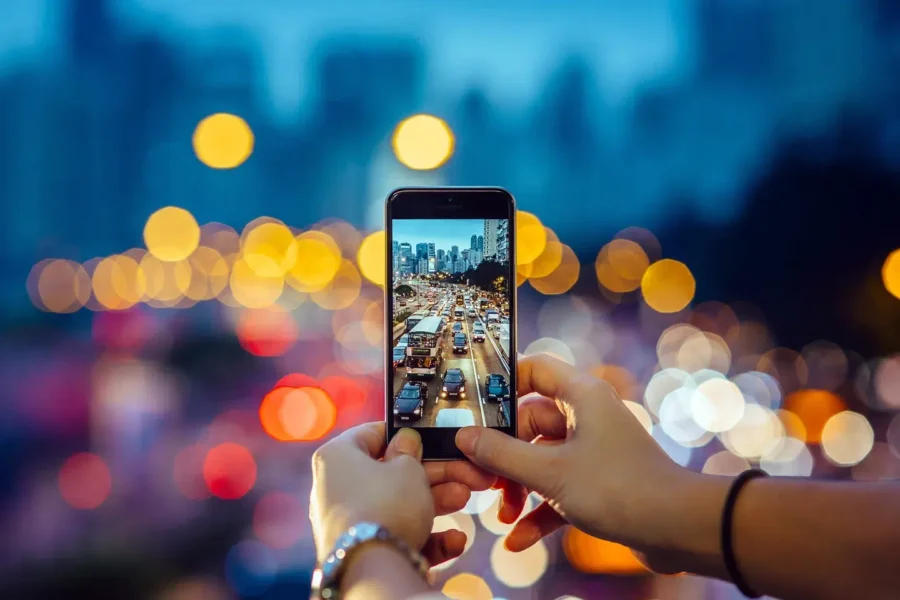The Evolving Lens
The recent announcement by Christie’s of “Augmented Intelligence,” its first sale dedicated solely to art created using Artificial Intelligence, sent ripples of both excitement and consternation through the art world. The auction, featuring critically acclaimed artists who employ AI as a tool, not merely as a “gimmicky science project,” ignited a fierce debate, culminating in a petition signed by thousands of artists concerned about intellectual property and the nature of creativity itself. This moment encapsulates the complex juncture at which photography finds itself. We are in a profound cultural period where image-making technologies are not just evolving but are poised to revolutionize our understanding of the medium.
The sheer volume of visual data generated daily, projected to reach 181 zettabytes in 2025, and the burgeoning AI image enhancer market, expected to grow from $2.11 billion in 2024 to $2.45 billion in 2025 , underscore the pervasive integration of these new tools. Yet, amidst this digital surge, a nostalgic yet vigorous resurgence of traditional film photography hints at a multifaceted, non-linear path forward for the art of capturing and creating images. The current contested landscape, exemplified by the Christie’s sale, serves as a microcosm of future challenges, forcing a re-evaluation of artistic authorship and the very definition of a photograph in an age of algorithmic vision.

From Silver Halide to Silicon: A Brief History of Photographic Transformation
Photography’s journey from a scientific curiosity to a ubiquitous cultural force has been marked by transformative technological leaps, each redefining its practice and perceived truth. The conceptual underpinnings trace back over two millennia to the camera obscura , but the medium’s tangible birth occurred in 1826 or 1827 with Joseph Nicéphore Niépce’s “View from the Window at Les Gras,” the first permanent photograph. This was soon followed by Louis-Jacques-Mandé Daguerre’s invention of the daguerreotype in 1837, which, despite its initial exclusivity, offered a more practical method and rapidly gained popularity. Concurrently, Henry Fox Talbot’s calotype process introduced the revolutionary negative-positive system, enabling the reproduction of images and fundamentally altering photography’s dissemination.
A significant democratization occurred with George Eastman’s introduction of rolled film in 1889 and the subsequent Kodak Brownie camera, which shifted photography from a specialized craft to a widespread amateur practice. This era cemented film as the dominant photographic medium for nearly a century. The next profound rupture began in the late 1980s with the advent of consumer digital cameras, but it was the launch of Adobe Photoshop in 1990 that truly heralded a new age. Conceived as a digital darkroom, Photoshop offered unprecedented capabilities for image manipulation, fundamentally challenging “long-held assumptions about photographic veracity or documentary ‘truth value’”.
An early, telling example of this challenge was National Geographic‘s 1982 cover, where the Egyptian pyramids were digitally altered to fit a vertical format, presaging decades of debate about photographic truth. Each technological shift, from unique daguerreotypes to reproducible film, and from the physical negative to the malleable pixel, has not only altered image-making processes but also forced a continuous re-evaluation of what constitutes photographic “truth” and the skills that define a photographer. This historical pattern of disruption, democratization, and subsequent professional anxiety provides a crucial context for understanding the current impact of AI.

The Current Frame: Technology, Art, and Practice Today
The contemporary photographic landscape is a dynamic arena where cutting-edge technology, particularly Artificial Intelligence, coexists with a renewed appreciation for traditional methods, profoundly shaping both artistic practice and market dynamics. AI is no longer a futuristic concept but an increasingly integrated tool across the photographic workflow. AI-driven software like Adobe Photoshop and Skylum Luminar offer sophisticated editing capabilities, from automated suggestions and intelligent noise reduction to advanced color grading and seamless object removal, allowing photographers to “focus more on their artistic vision”.
Beyond enhancement, generative AI empowers artists like Refik Anadol, whose “Unsupervised” installation transformed MoMA’s Gund Lobby using AI to interpret the museum’s collection , and Marco Brambilla, who harnessed AI for his “Approximations of Utopia” video installation across Times Square billboards. Galleries such as bitforms are at the forefront, showcasing artists like Quayola, Sarah Rothberg, and LaJuné McMillian, who explore the creative frontiers of AI, digital media, and interactive technology.
This technological surge has significant economic ramifications. The stock photography industry, for instance, faces substantial disruption from AI image generators that offer cost-effective, highly customizable visuals, prompting major platforms like Adobe, Shutterstock, and Getty to integrate AI, albeit with concerns for photographers’ livelihoods and content authenticity. In the fine art market, while 2024 saw a contraction in overall auction sales, with total fine-art auction revenue dropping 27.3 percent to $10.2 billion , there is notable resilience in the mid-tier segment ($100,000 to $1 million) and growth in the market for affordable art, especially prints priced under $5,000. Younger collectors, driven by personal taste and digital engagement, are gaining influence, potentially creating new avenues for digitally native and AI-inflected photographic works.
Paradoxically, this wave of digital innovation is met by a robust counter-narrative: the revival of analog photography. This resurgence is fueled by a desire for “authentic experiences,” the unique aesthetic qualities of film, its grain, depth, and color rendition, and the deliberate, tactile nature of the process. The limitations of film, such as a finite number of exposures per roll, encourage a more intentional approach to image-making, a stark contrast to the often-instantaneous and iterative nature of digital and AI-assisted photography.
This bifurcation of practice, one path embracing AI for efficiency and novel generation, the other championing analog methods for process and materiality, highlights the diverse value systems currently at play. While AI tools appear to democratize creation, the concentration of powerful model development within a few tech giants raises questions about long-term creative autonomy, even as the definition of photographic “skill” shifts from purely technical mastery to conceptualization, prompt engineering, and the infusion of a unique human perspective.

Critical Exposures: Debates and Dilemmas in the Algorithmic Age
The integration of Artificial Intelligence into photography has ignited a series of critical debates, exposing profound ethical, aesthetic, and economic dilemmas. At the forefront is the contentious issue of authorship, originality, and copyright. The controversy surrounding Christie’s “Augmented Intelligence” sale, which prompted a petition from over 6,500 artists, largely commercial photographers, highlighted deep anxieties about AI models trained on unlicensed intellectual property. This raises fundamental questions: Who owns an AI-generated image? Is it the developer of the AI, the individual who crafted the prompt, or is the work inherently uncopyrightable as a non-human creation?. The U.S. Copyright Office has indicated that AI-generated works are not eligible for copyright protection without “significant human contribution” , a standard that itself invites interpretation. Artists using AI, such as Roope Rainisto, assert their human artistry, while others, like Sasha Stiles, emphasize the development of personalized models and datasets, pushing back against a simplistic “human versus machine” dichotomy.
Closely linked are concerns about authenticity and the “human touch.” A prevalent fear is that AI-generated images, despite their technical sophistication, may lack the “emotional depth and subjective nuances” characteristic of human-created art. The “uncanny valley” effect, an unsettling response to near-human likenesses, can further complicate the reception of AI imagery. Conversely, proponents argue that AI is merely another tool, akin to a paintbrush , capable of acting as a “conceptual catalyst”. In this view, the photographer’s role evolves into that of a “curator or architect of data-driven processes,” as theorist Luigi Salvaggio suggests.
Critic Rob Horning, writing in Aperture, provocatively argues that “the idea of a ‘real photo’ has always been incoherent” , suggesting that current anxieties about AI’s impact on truth are an extension of long-standing debates inherent to the photographic medium itself. Historically, photography’s claim to authenticity rested on its indexical link to reality; as digital manipulation weakened this, and AI generation often severs it entirely, the focus shifts towards artistic intent and the degree of human creative input as potential new anchors for authenticity.
The ethical landscape is further complicated by issues of bias, misinformation, and economic displacement. AI models can inherit and amplify biases present in their training data, leading to skewed or harmful representations, a concern highlighted by practitioners like Myesha Evon Gardner regarding racism in AI technologies. The facility with which AI can create convincing “deep fakes” poses a severe threat to the integrity of information, particularly in fields like photojournalism where veracity is paramount. Media theorist Fred Ritchin and journalist Brian Palmer have explored these implications for the photographer’s role as a credible witness.
Furthermore, the automation of photographic and editing tasks raises legitimate fears of job displacement, especially within commercial sectors. The rapid evolution of AI means that legal and ethical frameworks are perpetually playing catch-up, creating an environment where norms are often forged in the crucible of controversy rather than by proactive regulation. This underscores the call from critics like Nora N. Khan for “new criteria to interpret generative images”. As artist Trevor Paglen and researcher Kate Crawford articulate, AI presents systemic threats to privacy and democracy, emphasizing that “people who think critically about photographs have a great deal to contribute” in navigating this new terrain, because, as Paglen states, “Photography is the paradigm of human-technology interfaces”.

Developing the Future: Projections and Emerging Trends
Looking ahead, the trajectory of photography will be inextricably linked with advancements in computational power and artificial intelligence. Computational photography is set to become even more deeply embedded in our image-making devices; industry experts predict that approximately 80% of smartphones will soon feature AI-powered cameras for sophisticated image optimization, including real-time enhancements, scene recognition, and advanced subject tracking. The global computational photography market reflects this boom, with projections estimating its value to reach nearly $93 billion by 2030. We can anticipate AI-generated images achieving even greater realism and offering creators more nuanced control, as text-to-image models like DALL-E, Midjourney, and Stable Diffusion continue their rapid evolution.
The integration of immersive technologies such as Virtual and Augmented Reality into photographic experiences is also expected to become more mainstream, potentially transforming how images are displayed and interacted with. This could merge with expanding 3D imaging and modeling capabilities, creating novel visual encounters. Consequently, the role of the photographer is poised for further transformation. Rather than being replaced, photographers may increasingly function as “collaborators with AI,” focusing on conceptual development, ethical oversight, prompt artistry, and the infusion of a unique human perspective that algorithms alone cannot replicate. Specialization in human-centric genres like portraiture and event photography, which rely heavily on interpersonal dynamics and emotional intelligence, may become even more crucial differentiators.
The applications of AI-driven photography are projected to expand significantly across diverse industries. Advertising and e-commerce are already leveraging AI to generate product imagery without costly photoshoots; fashion is experimenting with AI-generated models; and game development is using AI to auto-generate textures and virtual environments. Even fields like medical imaging are seeing substantial AI integration, with its market projected to exceed $14 billion by 2034. The AI image generator market itself is on a steep growth curve, forecast to surpass $1 billion by 2030.
This pervasive, often “invisible” integration of AI into everyday photography, particularly via smartphones, will subtly shape mass aesthetic preferences, normalizing an algorithmically optimized look. The lines between captured reality, computationally enhanced images, and fully generated visuals will continue to blur, creating hybrid forms that challenge traditional categorizations and demand new frameworks for understanding, perhaps moving beyond “post-photography” to a “para-photographic” era where images are created parallel to, yet independent of, physical reality. Amidst this technological acceleration, a counter-trend emphasizing ethical storytelling, authenticity, and sustainability in image-making is also predicted, reflecting a human desire for meaning and connection in an increasingly synthetic visual world.

Unresolved Imagesand Continued Discourse
The photographic landscape, as we have seen from the initial tremors of Christie’s AI art sale to the silent, pervasive spread of algorithmic enhancements in our smartphones, is in a state of profound and accelerated flux. Photography’s future is not a singular path but a dynamic, often contested, interplay between powerful new technologies, the enduring quest for artistic expression, the rich legacy of traditional practices, and the ever-evolving nature of digital media. The role of the photographer, far from becoming obsolete, is undergoing a critical transformation, one that demands adaptability, rigorous critical engagement, and an unwavering focus on the unique vision and ethical considerations that define human creativity.
The narrative of what photography will become is still being actively written, not by algorithms alone, but by the artists, critics, curators, technologists, and audiences who engage with these tools and debates. As Michael Famighetti, editor in chief of Aperture, noted in the context of AI’s impact, “these issues are significant, and they are here to stay”. The path forward necessitates continued discourse, ethical vigilance, and bold artistic experimentation. It requires, as Trevor Paglen suggests, those who understand the power and complexities of the photographic image to play a vital role in shaping the visual worlds to come. Ultimately, regardless of the medium, be it silver halide, pixel, or prompt, the fundamental human impulse to create and find meaning in images will persist, challenging us to continually redefine art, truth, and connection in an ever-shifting technological frame.










